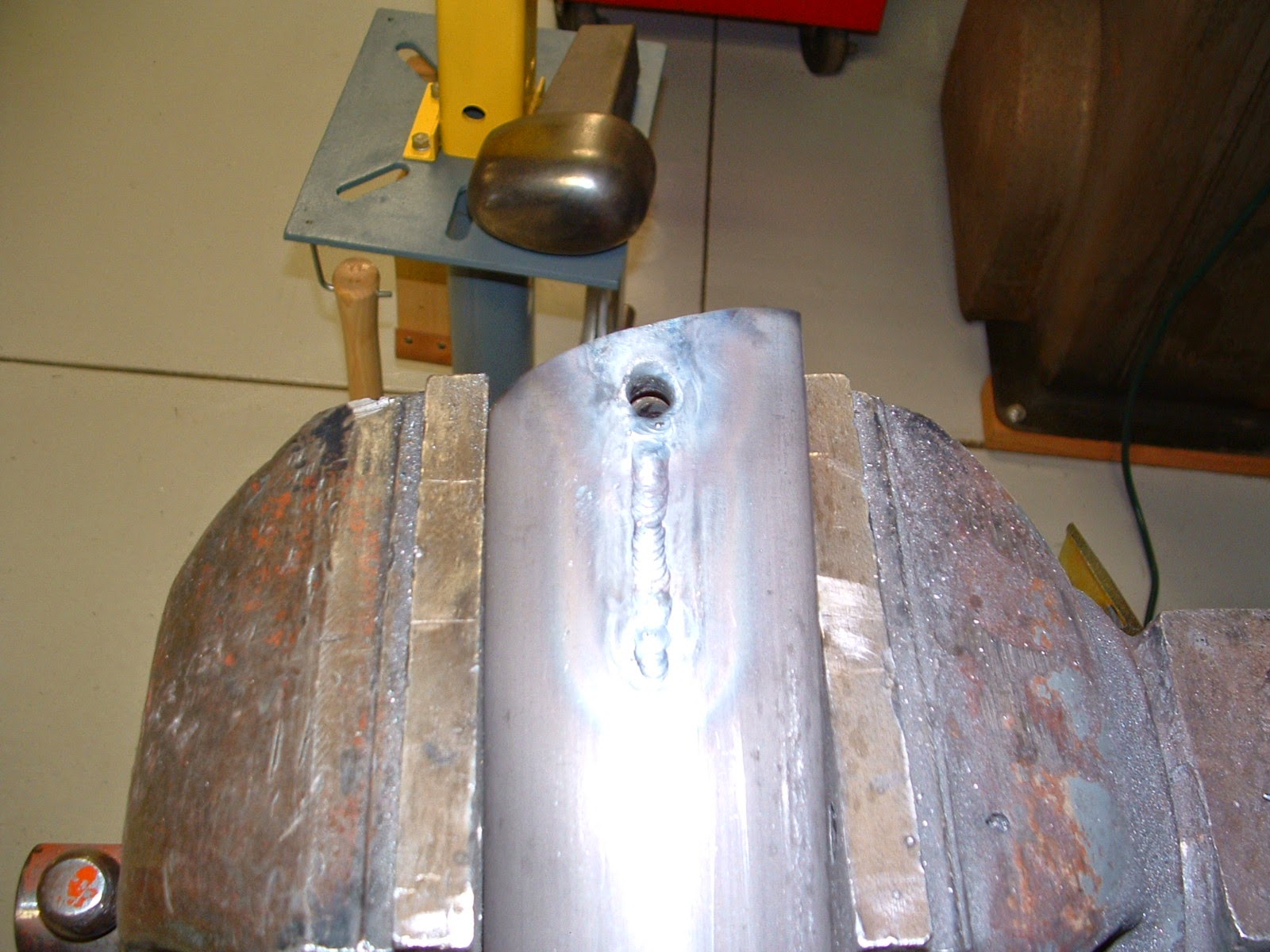The cabane struts are done!
I'll go into a little on how they were made, but first, I mentioned in the last post I would talk some on streamline tubing.
One of the very cool things (at least for me) when restoring old airplanes, is to learn the history - not only of the particular aircraft, but the materials and how things were made. In my research on streamline tubing, I found that 2 types were available: Kawneer and AN tubing. Kawneer tubing has a welded trailing edge. So, I assume it is made from a flat sheet, rolled into an airfoil shape, then welded along the trailing edge. My Funk that was made in 1946 uses Kawneer tubing for the struts. I'm not sure how much longer after that it was available, but it must have been phased out soon after that.
AN tubing - the type that is also used today - starts out as round tubing and is roll-formed into a streamlined shape. Seems like a better, easier approach to make it. If you have purchased any, though, manufacturer's are very proud of it - expensive!!
I should mention one other type of streamline tubing that was used primarily in the WWI years that is somewhat odd. It used several round tubes with progressively smaller diameters that were notched and nested together. This gave a rough airfoil shape that could then be covered with fabric - interesting...
You've read in some of my other posts that the LP is close copy to the OX-5 Swallow. Since I had no original cabane or N-struts, I made the assumption they were made the same as the Swallow which used Kawneer tubing. Wanting to keep things as original as possible, my mind immediately started to think on how I could make Kawneer tubing since it was no longer available. I actually took some AN tubing, cut the trailing edge, squeezed it to a sharp point and welded it. Looked good, just like Kawneer tubing, but I couldn't get AN tubing that would give me the correct final dimensions of the Kawneer tubing. RATS!
Then I got looking at my landing gear legs which used streamline tubing. I was always under the impression that Andy had these repaired after the accident in 1929 with AN tubing since it wasn't Kawneer. I had Andy stop by and look at the gear legs and he said the tubing was original. Now, this got me thinking...the gear tubing and strut tubing appears to be the same size in all the photos. Why would a manufacturer stock and use 2 different types of tubing that are the same size? So, I've made the assumption that the LP used AN streamline tubing. The exact same size is still available today. Right or wrong, this seems to make the most sense, and I think I have a better chance of being more right than wrong!
How they were made...
I showed in the last post how the adjustable ends on the diagonals were made. There were 2 other ends that had to be fabricated.
 |
| Rear cabane strut |
In this photo, the finished strut is on the left. The one on the right, shows the fabricated end that is slid into the strut and welded in place. It includes the mounting tab for the diagonal and an internal pocket for the mounting tab on the fuselage to attach.
 |
| End view showing pocket for mounting tab |
Here you can see the internal pocket for the mounting tab on the fuselage to go.
 |
| Strut has been slit ready to receive bushing and extension |
All the other ends were a little easier to fabricate. Basically a bushing with an extension welded to it to distribute the load. The following pictures tell the story...
 |
| Using mounting tab and punch to align everything prior to welding |
 |
| Extension on bushing welded and bushing welded to hole in strut |
 |
| Finished assembly |
 |
| Bead blasted fuselage |
 |
| Bead blasted tail surfaces |
 |
| Rotisserie chicken!! |
My friend, Mark brought over this great rotisserie for me to mount the fuselage on. He had it for car restorations he does and modified it to fit my fuselage. I can rotate the fuselage 360 degrees with one hand - this will be so nice!
 |
| Hangar getting full! |
 |
| 1931 Fleet Model 9 fuselage |









